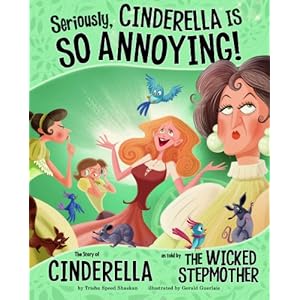We are in day three of celebrating our first blog anniversary and today we are sharing a wonderful guest post written by Tatyana Elleseff M.A., CCC-SLP, from Smart Speech Therapy LLC. She has a terrific blog and on-line store full of well researched, accurate and useful documents for speech therapists, caregivers, and other educators. If you haven't seen her comprehensive and diverse list of documents, blog posts, and reviews lately, than you are missing out! Go and take a look as soon as you can! Please click here to check out Smart Speech Therapy LLC today. :)
Friendly reminder: There's three AWESOME Rafflecopter giveaways going on this week at our blog! They include all kinds of super great themed therapy documents written by talented speech language pathologists all across the U.S.! We even have a great app by Smarty Ears to give away! Please don't forget to enter all three giveaways following this post to increase your chances at winning! Have a happy Wednesday everyone!!
Manda & Shanda, SLP's
And here is the blog post from Tatyana on addressing critical thinking skills using picture books in therapy!
 Addressing Critical Thinking Skills via Picture Books in Therapy
Addressing Critical Thinking Skills via Picture Books in Therapy
Critical thinking are a set of skills children need to make good independent decisions. Critical thinking abilities involve children analyzing, synthesizing and evaluating information in order to recognize patterns, distinguish right from wrong, offer opinions, anticipate reactions to their actions, compare scenarios to choose favorable outcomes, as well as consider a variety of solutions to the same problem.
Even for typically developing children critical thinking can at times be a bit of a challenge and needs to be nurtured and encouraged through a variety of ways. However, for language impaired children, critical thinking skills hierarchy needs to be explicitly addressed in therapy sessions in order to improve these children's independent decision-making abilities.
Teaching critical thinking skills to language impaired students is no easy feat especially considering the "seriousness" of the subject matter. One fun way I like to address critical thinking skills is through picture books utilizing the framework outlined in Bloom's Taxonomy: Cognitive Domain which encompasses the following categories: knowledge, comprehension, application, analysis, synthesis, and evaluation.

Prior to story reading ask the children to flip through the pictures and ask them questions regarding what the story might be about and what could be some potential story problems based on provided pictures.
During story reading actively question the child to ensure that they are not just passive story listeners (e.g., "Why do you think...?). Begin with basic story recall of characters, events, and outcomes (knowledge). Here asking simple -wh- questions will do the trick. Then move on to checking on what the child has done with the knowledge by asking him/her to identify main ideas of the stories as well as associate, compare, contrast and classify information (comprehension).
As you are reading the story as students to compare and contrast different characters as well as different story situations. Children can also critically compare different (satirical) story versions of popular tales like Cinderella, Little Red Riding Hood, Jack and the Beanstalk, etc.

Involve children in active story discussion and analysis by asking questions the answers to which are not directly found in the story (e.g., Who else do you know who also...?; Why do you think the ___did that?) Ask the student to identify each characters motives. When looking at a particular problem in the story ask the student how they would solve a similar real-life problem (application).
Have them weigh in pros and cons of the characters choices. Make a ridiculous statement about a story or character and have the students argue with you and explain constructively why they disagree with it. It will teach them how to find weaknesses in someone else’s reasoning. Ask the children to synthesize the presented story by generalizing it to relate to another story or an episode from their daily life.
Consider covering up story ending to have the students create their own creative alternate story conclusions. Do a shared story reading in group therapy sessions and then have a debate (e.g, Who is your favorite character and why?) in which each child has to provide appropriate rationale in order to successfully defend their point of view.


Teaching children critical thinking skills is an integral part of therapy since children need to use their language skills effectively in order to make informed decisions and function appropriately in social and academic settings. So how are you teaching critical thinking skills in therapy?
 Bio:
Bio: Tatyana Elleseff MA CCC-SLP is a bilingual SLP with a full time hospital affiliation as well as private practice in Central, NJ. She specializes in working with multicultural, internationally and domestically adopted as well as at-risk children with complex communication disorders. For more information visit her BLOG, STORE, or follow her Facebook page.
Helpful Resources:
- Don't Buy it PBS kids website which teaches children how to evaluate products and become informed consumers
- Critical Thinking Links For K-3 Educators free resources for incorporating critical thinking concepts for grades K-3
- Critical Thinking Links For 4th To 6th Grade Educators free resources for 4-6 grades
a Rafflecopter giveaway
a Rafflecopter giveaway
a Rafflecopter giveaway


Congratulations on your first blogaversary!
ReplyDeleteJulie
Mrs Stowe's Kinder Cottage
Congratulations!
ReplyDeleteCongrats on turning one! Thanks for the opportunity to win - you girls rock!
ReplyDeleteHappy Birthday to your blog : )
ReplyDeleteHappy blogaversary!!! Love love love your products!
ReplyDeleteI definitely enjoy reading your posts, and find your materials very helpful, thank you for creating them!
ReplyDeleteHappy Blogaversary!
ReplyDeleteHow do I claim a prize if I see my name listed as a winner?
ReplyDelete